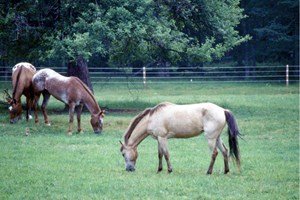Home > Horse Care > Nutrition > Fructan in Foods
Fructan in Foods
- July 25, 2019
- ⎯ Equus
Horses aren’t the only ones who have trouble digesting carbohydrates. The human digestive tract isn’t outfitted with enzymes to readily break down the carbohydrate known as fructan.

“Fructan is not absorbed in the small intestine so it penetrates down into the colon where it is used by the intestinal microflora and bacterial production goes to work,” says Andrew Cairns, PhD.
In contrast, ruminants have microflora to ferment carbohydrates at the “front end” of the digestive system and these stimulate nitrogen–an important component of protein–conversion, which is easily absorbed in the back of the digestive tract.
But fructose, the molecular building block of fructan, is a popular sweetener in soda and fruit spreads. And in addition to being present in grass plants, naturally occurring fructan is found in artichoke, Jerusalem artichoke, chicory and banana. Herbs from the onion family, such as leaks, garlic and onions, contain fructan in the bulbs. Some processed foods, including some breakfast cereals, candy, ice cream and yogurt, also contain fructan.
Aside from its sweetening function, some researchers are studying fructan from a medicinal standpoint.
“It’s a natural laxative and there is research being done in Europe to see if it reduces colon cancer in humans,” says N. Jerry Chatterton, PhD. “The production of bacteria lowers pH levels, which may reduce the risk of colon cancer.” One study found that chicory fructan stimulates the growth of bifidobacteria, which inhibits colon carcinogenesis in laboratory animals.
To read more about fructan, see “Danger in the Grass” in the April 2004 issue of EQUUS magazine.





